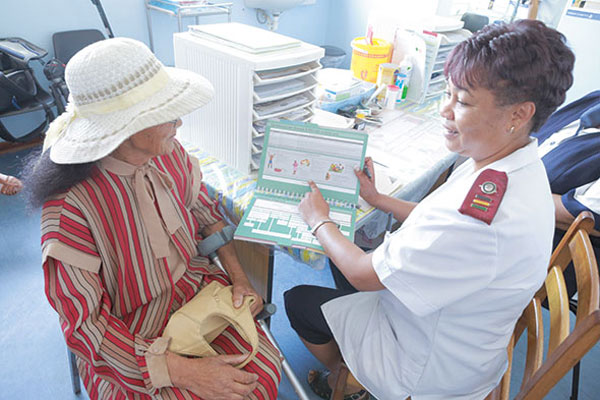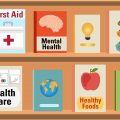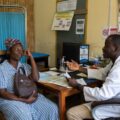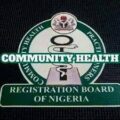What is community health care?
Community health is a branch of public health which focuses on people and their role as determinants of their own and other people’s health it focuses on the physical and mental well-being of the people in a specific geographic region. This important subsection of public health includes initiatives to help community members maintain and improve their health, prevent the spread of infectious diseases and prepare for natural disasters.
According to the CDC Working at the community level promotes healthy living, helps prevent chronic diseases and brings the greatest health benefits to the greatest number of people in need. Community health is inextricably tied to individual wellness. “Good community health equates to healthy people, as a community is the ecosystem or environment in which people live. According to public health experts it is difficult to be healthy personally if your community is unhealthy.
Classification of Community Health
Provision of community health care services can be classified into 3 categories namely
Primary Healthcare: This connects to interventions that emphasis on the individual or family, for example, circumcision, hand-washing, vaccination, individual dietary preferences, and way of life upgrading.
Secondary Healthcare: This type of community healthcare service focuses on those exercises which concentrate on the environment, for example, depleting puddles of water close to the house, clearing bushes, plus spraying insecticides to control vectors such as mosquitoes.
Tertiary Healthcare: This type of community health care relates to those interventions that happen in a hospital setting, for example, surgery or intravenous rehydration.
The achievement of Community health programs depends upon the exchange of data from health experts to the overall population utilizing coordinated or one to many communications or mass communications. The most recent move is en route for health marketing.
Advocating good health & guaranteeing quality health care stretches out beyond hospital as well as doctor care. Actually, specialists disclose that 80% of well-being is driven by financial elements, health practices along with environmental factors. As it was, health care is just 20% of the health equation. Working at the community level to endorse healthy living and avert chronic infection conveys the most excellent medical advantages to the maximum number of individuals in need. It additionally decreases health gaps caused by contrasts in race & ethnicity, area, social status, takings, and different variables that can influence well-being.
Importance of Community Health Care Systems
Community health impacts everything educational achievement, safety and crime, people’s ability to work and be financially healthy, life expectancy, happiness and more. Health impacts every other facet of life, from a child’s ability to learn to an adult’s ability to work, so health is critical for education and financial well-being.”
The effect of health on quality of life can also impact the desire to participate in civic duties like voting, social functions and leisure activities. Communities that are attentive to public health can even reduce the impacts of disease outbreak, natural disasters and inequality among their residents. Community health also helps to reduce health gaps caused by differences in race and ethnicity, location, social status, income and other factors that can affect health
Factors that improve community health
Improving community health is a huge undertaking that involves cooperation between public health workers, local government, volunteers and average citizens alike—and the end products of their work can take a lot of forms.
Healthy food
Healthy food programs in community health focuses on community nutrition. Community nutrition is the process of helping individuals and groups develop healthy eating habits in order to promote wellness and prevent disease. Most people increasingly eat a diet that is high in saturated fat and refined sugars and lacking in fruits, vegetables, and whole grains. Poor dietary habits are linked to health conditions such as obesity , diabetes, heart disease , strokes, and some forms of cancer . The goal of community nutrition is to educate individuals and groups so that they adopt healthy eating habits. Dieticians and nutritionists work with many other health care professionals in promoting improved community nutrition. Their efforts emphasize a preventive approach in educating individuals in how a change in dietary habits will reduce the risk of illness.
Protecting and improving health, especially in poor communities, requires a combination of community- and facility-based activities, with support from central levels of organization, as well as some centrally run programs (for example, food fortification).
Education
Education plays a large role in maintaining community health. Health fairs and advertising campaigns that expose the dangers of risk factors like tobacco exposure, poor nutrition and physical inactivity can raise awareness about the importance of choosing a healthy lifestyle. Health education is one strategy for implementing health promotion and disease prevention programs. Health education provides learning experiences on health topics. Health education strategies are tailored for their target population. Health education presents information to target populations on particular health topics, including the health benefits/threats they face, and provides tools to build capacity and support behavior change in an appropriate setting. Examples of health education activities include:
- Lectures
- Courses
- Seminars
- Webinars
- Workshops
- Classes
Characteristics of health education strategies include:
- Participation of the target population.
- Completion of a community needs assessment to identify community capacity, resources, priorities, and needs.
- Planned learning activities that increase participants’ knowledge and skills.
- Implementation of programs with integrated, well-planned curricula and materials that take place in a setting convenient for participants.
- Presentation of information with audiovisual and computer based supports such as slides and projectors, videos, books, CDs, posters, pictures, websites, or software programs.
Community playgrounds and Regular Community Exercises
All people need physical activity to maintain fitness and health. Physical activity increases strength, flexibility, and endurance; relieves symptoms of depression and anxiety; improves mood; and enhances psychological well-being. According to the Centers for Disease Control and Prevention (CDC), only 25 percent of American adults engage in recommended levels of physical activity, and 29 percent engage in no leisure-time physical activity at all. This sedentary lifestyle is contributing to an increased incidence of obesity along with obesity-related diseases, such as high blood pressure, diabetes, congestive heart failure, and stroke. Community based actions have the capacity to influence this negative indicators.
A community-based solution is an action, policy, program, or law that is driven by the community (members), affects local factors that can influence health, and has the potential to promote health equity. The potential of community-based solutions to advance community health could be identified, developed, and implemented at the local or community level.
Accessible healthcare services
Accessible health and social services enable people to use appropriate healthcare resources in order to maintain or improve their health. Access to comprehensive, quality health care services is important for promoting and maintaining health, preventing and managing disease, reducing unnecessary disability and premature death, and achieving health equity for all. Accessible healthcare services comes under 3 categories namely:
Physical accessibility; refers to the availability of good health services within reasonable reach of those who need them and of opening hours, appointment systems and other aspects of service organization and delivery that allow people to obtain the services when they need them
Economic accessibility, or affordability; is the measure of people’s ability to pay for services without financial hardship. It takes into account not only the price of the health services but also indirect and opportunity costs (e.g. the costs of transportation to and from facilities and of taking time away from work).” Affordability is influenced by the wider health financing system and by household income.
Information accessibility; “includes the right to seek, receive and impart information and ideas concerning health issues”. This access to information, however, “should not impair the right to have personal health data treated with confidentiality”.






